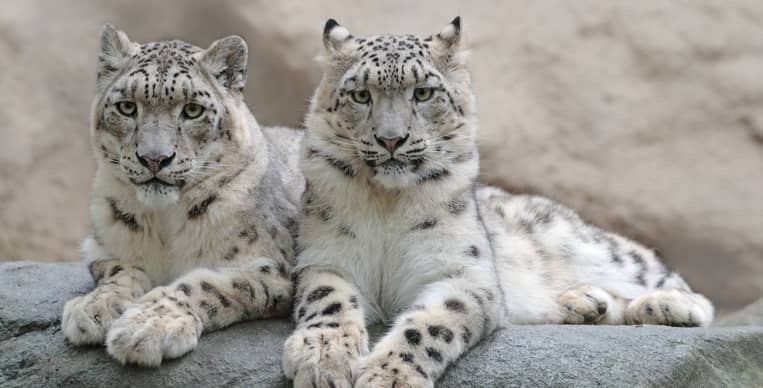
Everybody, or at least those with a faint enthusiasm for travel, would know of Ladakh’s splendid beauty. With its craggy landscape interspersed with divine appearing lakes and monasteries dating back hundreds of years, it has become an all-time favorite tourist destination. Surprises galore in this part of the world, as do newer experiences at every step.
One of these experiences awaits you at Hemis National Park, where the rugged landscape is home to thriving wildlife consisting of several endangered species along with rare ones. It’s not just wildlife though, the park also boasts vegetation which is found exclusively in these areas. Visiting the Hemis National Park on your trip to Ladakh is something you should not miss out on. In this blog, we tell you all you need to know about Hemis National Park and why it’s such a major tourist attraction.
A short history of Hemis National Park
Hemis National Park, also known as Hemis High Altitude National Park, was established as a national park in the year 1987. Located in the eastern region of Ladakh in the state of Jammu and Kashmir, the park is the biggest of its kind in South Asia. It is also the second largest contiguous protected region after Nanda Devi Biosphere Reserve. It’s believed that the park derives its name from Hemis Gompa, one of the famous Buddhist monasteries situated about 40km southeast of Leh.
Facts about Hemis National Park
Hemis National Park is one of the most popular tourist attractions in Ladakh. It is famous for its fascinating wildlife and vegetation. The park is situated at the bank of River Indus and blessed with some of the most gorgeous scenery you will ever come across. There are six villages within the premises of the park, along with several gompas and chortens. The terrain surrounding the park is rocky and supports very less vegetative growth. However, with the onset of the summer season, the grass growth is quite rapid.
Flora and Fauna of Hemis National Park
Fauna
Hemis National Park is home to a number of rare species and it’s a fascinating experience to observe them or even catch sight of them. You will also find different kinds of mammals inside the park. However, the main attractions inside the Hemis National Park are the Shapu sheep and Snow Leopard. These two animal species are not found anywhere else in the country. Inside the park, you will get a chance to observe various kinds of animals including Bharal (Blue Sheep), Great Tibetan Sheep and Shapu (Ladakhi Urial). The various kinds of endangered species that the park is home to are the Eurasian brown bear, red fox, and Tibetan Wolf, among others.
Flora
Hemis National Park boasts wildlife vegetation which is exclusive to this region. Most of the vegetation inside the park is of Himalayan subtropical pine forests, Western Himalayan alpine shrubs and Himalayan alpine tundra. When you head down to the lower areas of the park, you come across various kinds of plant species including juniper, fir and dry birch. The upper mountain slopes of the park carry greater precipitation, hence there is a wide variety of alpine vegetation in these areas.
Avifauna
Hemis National Park is also home to several bird species that are found mostly in the upper reaches of the park, rather than the lower reaches. Almost 30 species of birds have been recorded inside the park, with the most famous ones being the Snowcock Tetraogallus, Himalayan Vulture, and the Chukar partridge.
Best time to visit Hemis National Park
The best time for exploring and sightseeing at the Hemis National Park is from the months of May to early-October. After the month of October, most of the roads which are generally used for jeep safaris, as well as trekking, are blocked due to heavy rainfall.
Things to carry on your trip
Exploring the Hemis National Park may be quite challenging for you at times due to its uneven landscape. You might come across steep slopes and cold deserts. It’s extremely important, therefore, that you carry the essential items with you at all times. Some of the items which you should carry are:
- Good pair of walking shoes
- Warm and comfortable jackets
- Walking stick which should be with you at all times
- Plenty of water, for water, is hard to come by there
- A first-aid box which contains certain medicines for fever and high-altitude sickness
- You should always carry a pair of sunglasses with yourself
- Energy providing bars, snacks, and beverages
- A portable charger
- A high-resolution camera
- Loose change (you never know when it may come in handy)
Nearby attractions to Hemis National Park
Khardung La Pass
Khardung La Pass lies almost 2 hours away from Hemis National Park. Situated at an altitude of 18,379ft above sea level, it’s the highest motorable pass in the world. The pass is the gateway to remote Nubra and Shyok valleys.
Tso Moriri Lake
Although Tso Moriri Lake lies almost 4 hours away from Hemis National Park, the drive is worth it. Situated slightly off the Manali-Leh highway, it is the largest high-altitude lake in the Trans-Himalayan region. The lake water is fed by springs and snowmelt from the Changthang plateau.
Nubra Valley
Nubra Valley is located almost 5 hours away from Hemis National Park. It is one of the most popular tourist attractions in Ladakh and possesses a beauty that is quite otherworldly. A unique experience awaits you here in the form of a ride on a double-humped Bactrian camel.


